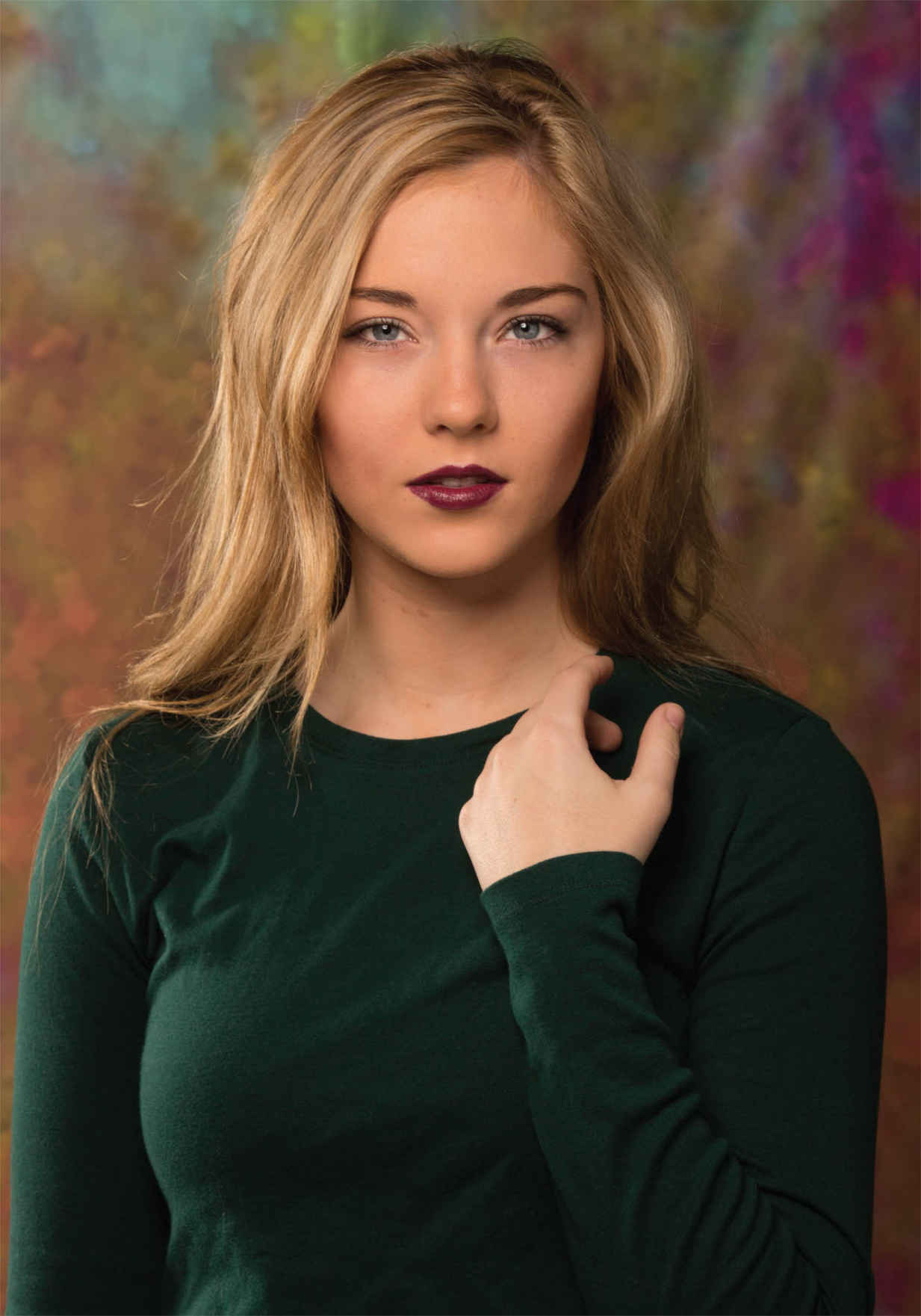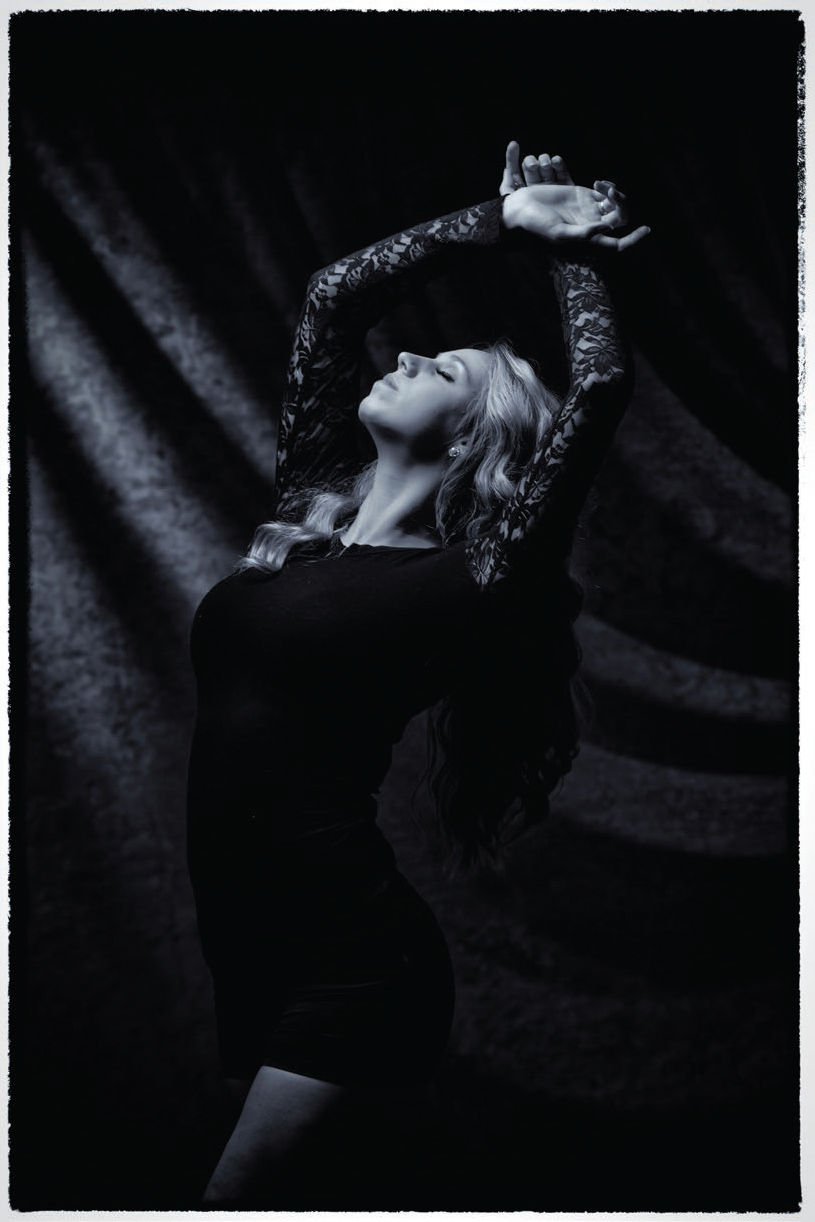Assignment 1: Variations in Contrast
Assignment Goal: Learn to adjust shadow density with the aid of a properly placed reflector (white or silver) to result in a variety of looks or moods.
Assignment Details: Create a series of three pictures that are identical in their lighting and posing—with one exception. Without changing the exposure settings, adjust the amount of shadow on the side of the subject’s face opposite the main light by moving a reflector close to the face, then a little further away, then a little further away again.
Assignment 2: The Eyes Have It
Assignment Goal: Create three different portraits that showcase the eyes of your subject/model.
Assignment Details: Using the techniques you learned in earlier chapters, utilize a variety of light shaping tools, light directions, and light qualities to create a series of images designed specifically to produce unique or interesting catchlights in your subject’s eyes—catchlights that draw the viewer in. This might include small, bright sources for intense catchlights; large, soft sources for larger, more subdued catchlights; a silver reflector for highlights in the bottom parts of the eyes, etc. Be creative and think in terms of reflective eyes. Anything you place in front of the subject will indeed be reflected in the eyes so be creative and test, test, test something new. (How about including a small silhouette of yourself in front of a very large light source?)
Assignment Goal: Create two formal portraits suitable for framing and hanging in the finest of homes. These should tell a story about your subject.
Assignment Details: Work to produce two images (one full-length and one three-quarter-length) that harken back to the work of the great portrait artists of the past. To inspire your lighting, posing, and overall style, you can use painters from the Italian Renaissance period, the Dutch Masters, or even the more current photographers working in a traditional manner (William Branson III, Greg Daniel, or Tim Kelly, to name a few). Rather than something trendy, make these images worthy of being passed down through generations.

Assignment 4: The Contemporary
Assignment Goal: Create two images of the same subject dressed in clothing and accessories that reflect the current styles.
Assignment Details: From the background, to the lighting, to the posing, create a couple of different images that would be appropriate to use in an advertisement for either the clothing or the accessories (hat, purse, shoes, etc.). When planning for this series, make sure to choose a subject that fits your “assignment” in terms of his/her looks, hair style, personality, mood, etc.

Assignment Goal: Create an image of your subject dressed all in white on a white background. Then, edit the shot to make it black & white.
Assignment Details: This assignment is designed to help you understand that, with lighting, you can control tonal contrast in an image where there is no color contrast. Working on a white background with white clothing and in black & white is a great exercise in overall control and lighting management.
Assignment 6: The One-Light Portrait
Assignment Goal: Create two portraits using only one light.
Assignment Details: Work to produce two images designed to illustrate your command of both lighting quality and your communication with the client. Use eye contact, facial angles, and overall mood to enhance the feel and result of the images. Give yourself plenty of time on this one and don’t think that one light is fast and easy to use. A successful one-light portrait requires finesse and proper light placement. Consider the one-light portraits of photographers Mark Seliger, Irving Penn, and Marc Hauser.

Assignment 7: The One-Light Still Life
Assignment Goal: Create one image designed to explore the simplicity of fine art or commercial table-top photography.
Assignment Details: Working with one light overhead and slightly behind your subject, explore approaches to controlling the highlights and shadows using the single source and also by introducing a reflector at the front of the set.
![]()
Explore approaches to controlling the highlights and shadows using the single source . . .
Assignment 8: Add Colored Gels
Assignment Goal: Create two images featuring the use of color gels on the accent light(s) or background light(s).
Assignment Details: Work to understand the relationship between the gelled lights and the non-gelled lighting. The incident and reflective meters each play a significant role in achieving success with this type of image.